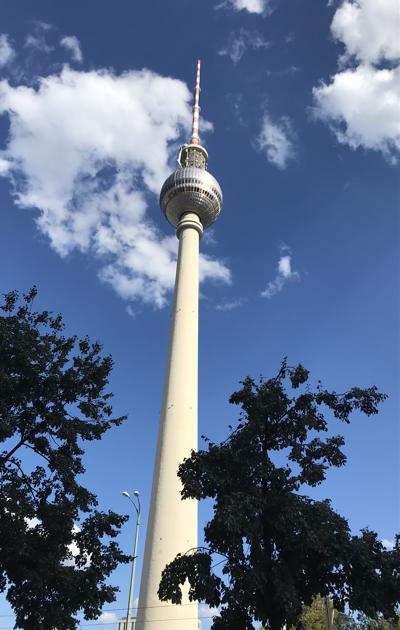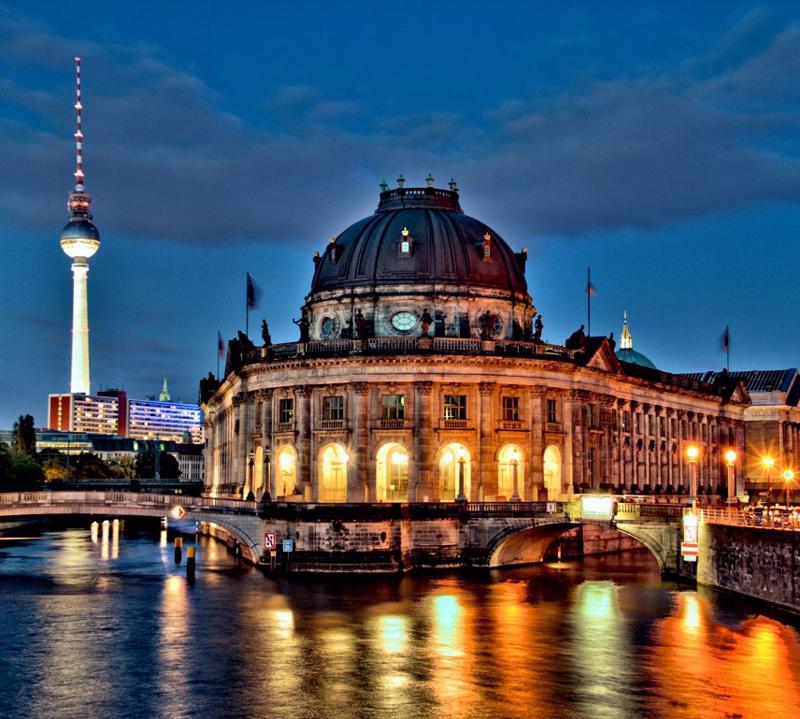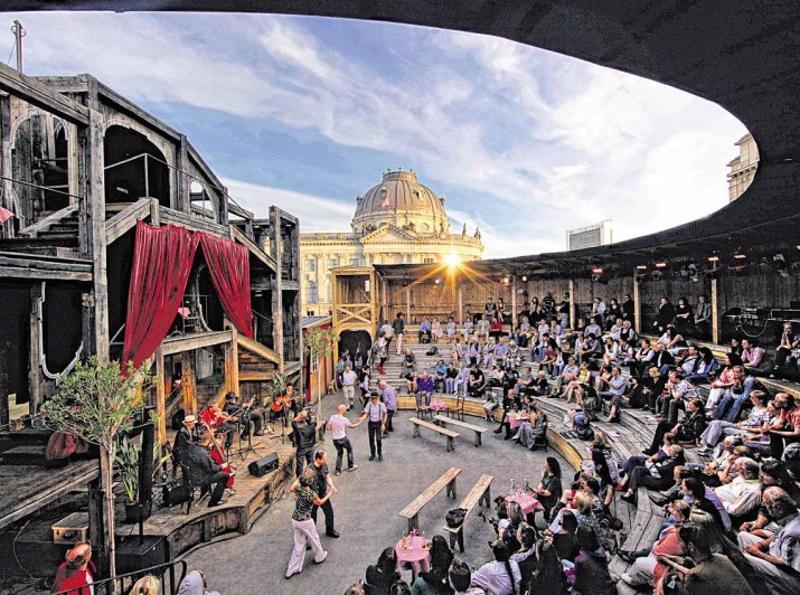2018 Adventures
Today's Garmin Step Mileage: 11 km
Well today is a funny journey day so far. Rick and I had bought all of our train tickets prior to leaving Canada and made sure that we had a way to get to each city.. not leaving it to the last minute. When we first arrived to Prague we went to the ticket office to confirm that we had the right paperwork for the train and that we didn't need to "trade" anything in for different tickets. The attendant confirmed that we had a print out for 2 -person and that it was our form of ticket. Last night we logged in on-line and used a "translator" to find out
brenda stanger
104 chapters
16 Apr 2020
Europe - Berlin
Day 1 - Berlin
Today's Garmin Step Mileage: 11 km
Well today is a funny journey day so far. Rick and I had bought all of our train tickets prior to leaving Canada and made sure that we had a way to get to each city.. not leaving it to the last minute. When we first arrived to Prague we went to the ticket office to confirm that we had the right paperwork for the train and that we didn't need to "trade" anything in for different tickets. The attendant confirmed that we had a print out for 2 -person and that it was our form of ticket. Last night we logged in on-line and used a "translator" to find out

what everything else meant on our on-line printed tickets. We were able to find out the train car number and seat assignment for our journey. I honestly don't know what we did before the internet. It was much more complicated to travel in the earlier days.
So.. we arrived early to the train station and enjoyed some quiet time in the first class lounge before boarding our train. Once the platform number was posted we headed straight up to the platform. Then it was the mad rush to the train to get to our seats. Rick always likes to get to the train station and airports early to ensure that we have enough time to get where we need to be. Once the train arrived we headed straight for our seats. Luckily we looked everything up yesterday to understand what train car we were on and what seats we had. When boarded it was quite the cluster. People were everywhere, bags cluttering up the hallway. People fighting amongst themselves for seats. There were people in first class without seat assignments; having paid full fare for their tickets and now have to go sit in the dinning car for the journey. People fighting for upper cargo space for luggage and yelling at each other.. So entertaining. Here we sat with our luggage up top (since we boarded early) and relaxing in our seats with a prime view of all the ruckus and chaos.
We arrived to Berlin HBF train station and headed to the information booth to buy a transit ticket and ensure that I had the correct transit directions to our hotel. Our hotel was only one stop from the main train station. Once we got off the S-Bahn train, we headed out of the station and north 1/2 block and we were at our hotel - Melia Hotel.
It is a great hotel in a what couldn't have been any better location. We are located right on the river and next to a train/tram stop. We can virtually walk to all the sights from our hotel. We had a nice room with plenty of room for the 2 of us. It is going to be a great place to stay for 3 nights.
Berlin Accommodations - $315.05 Euros for 3 nights ($485.00 CAD)
We agree that most cities we could see in 2 days, but with 3 nights we are not so "rushed" to see everything. If we want to sleep in we can, enjoying our time over here and not going home feeling like we need a holiday from our holiday.
Once we got settled to our room we wanted to take in some of the sights and get an understanding of where everything is. So we headed out of our hotel to the river (north) and then walk east along the rivers esplanade. The river meanders throughout Berlin and is a "walled" river with walkways and bike pathways the entire distance. Berlin is a very bike friendly city, with bike lanes everywhere you

look. It is also pretty flat with the exception on one area just across the river.
We headed over to the museum island area to check out some of the sights. Many of the buildings were in the process of restoration and there is construction everywhere; making it difficulty to get around in-between the sights. On the way we passed through a "flea market"/artisan market that was located on the roadway just outside the Museum Island. It looked like it is very popular with the locals.
Museum Island is the name of the northern half of an island in the Spree river in the central Mitte district and the site of the old city of Cölln. It is so-called for the complex of internationally significant museums, all part of the Berlin State Museums. In 1999, the museum complex was added to the UNESCO list of World Heritage Sites.
The Altes Museum (Old Museum) named as the Königliches Museum when it was built on August 3, 1830, until it was renamed in 1841.
The Neues Museum (New Museum) finished in 1859. It was destroyed in World War II, but rebuilt and reopened in 2009 as the Egyptian Museum.
The Alte Nationalgalerie (Old National Gallery) completed in 1876 to host a collection of

19th-century art donated by banker Joachim H. W. Wagener. It contains a collection of classical antiquities. The collection of Etruscan art is one of the largest anywhere in the world outside Italy. The collection of Roman art, meanwhile, unveils precious artefacts such as the Hildesheim silver find and portraits of Caesar and Cleopatra.
The Bode Museum on the island's northern tip, opened in 1904 and then called Kaiser-Friedrich-Museum. The magnificently designed Bode-Museum is home to two collections: the Sculpture Collection and Museum of Byzantine Art and the Münzkabinett. In addition, the museum also contains paintings from the Gemäldegalerie, which are

presented alongside the European sculpture to form a dialogue between the two art forms.
The Pergamon Museum, constructed in 1930. It contains multiple reconstructed immense and historically significant buildings such as the Pergamon Altar and the Ishtar Gate of Babylon.
The Humboldt Forum will open in 2019 in the Berlin Palace opposite the Lustgarten park, and will incorporate the Ethnological Museum of Berlin and the Museum of Asian Art.
From there we headed over to the Alexanderplatz and the TV tower.
Alexanderplatz is Berlin’s eastern centre and is an important transport junction – for the S-Bahn, U-Bahn, regional trains, trams and buses. It also has a great many great tourist attractions within walking distance, making it the ideal starting point for a sightseeing tour of Berlin.
Up to the 1850s, Alexanderplatz was a military parade and exercise ground, as well as a place where local farmers sold their produce. It became a major transport junction when the railway station opened in 1882. Alexanderplatz is not only a now a major transport junction, but also a historic site. There was street fighting in the square during the March Revolution of 1848, and in November 1989 – just before the fall of the Berlin wall – the peaceful demonstrations against the East German regime culminated here.
Close to Alexanderplatz in Berlin-Mitte, the TV tower was constructed between 1965-69 by the government of the German Democratic Republic (GDR). It was intended to be both a symbol of Communist power and of Berlin. With its height of 368 metres (including antenna) it is the tallest structure in Germany, and the second-tallest structure in the European Union.
In addition to its main function as the location of several radio and television broadcasting stations, the building – internally known as "Fernmeldeturm 32" – serves as a viewing tower with observation deck including a bar at a height of 203 metres, as well as a rotating restaurant. After German reunification, it changed from a politically charged, national symbol of the GDR into a citywide symbol of a reunited Berlin.
We started to head in the direction of home, walking along the north river esplanade. We walked past the edge of Hackescher Markt, formerly a rather neglected area. The revitalized old buildings has been developed into a cultural and commercial centre after German reunification. The square is also served by several tramway and night bus lines. A weekly market is still held every Thursday and

Saturday.
It its interesting in that under the train bridge/support they have developed a number of bars/restaurants in the spaces below. It is a popular place for people to gather in lawn chairs (provided by the restaurants) to sit and visit in the park spaces with glasses of wine and/or beer. It seems like the Germans are like many other Europeans and that they really enjoy the public parks and spaces.
As we continued down the pathway we noticed that people were lined up around a building; the Monbijou Theatre. Whether it’s drama or comedy – the main thing is plenty of make-up! With their bright red cheeks, soot-black hands, curly wigs and brash costumes, the performers at the Monbijou Theater are an impressive sight. And the backdrop is just as striking. In summer the audience sit in the home-made wooden amphitheatre, with a great view not only of the stage, but also Berlin’s Museum Island. In winter, they can enjoy the funny – but scary – shows on the warm and comfy benches of the fairytale cottages. Too bad the performances were in German, as it would have been a great place to go see a performance.
We stumbled across a wonderful little place to eat along the river side, serving up simple but delicious pasta dinners. A glass of rose wine and pasta seemed like a good fit after a full day of exploring. After dinner we continued our stroll along the riverside and through the Mitte district - about 3 km home.
Another great day travelling. Tomorrow we will head out to discover all that Berlin has to offer.
1.
Year of Travel
2.
Sosua - Dominican Republic
3.
Our Adventures So Far...
4.
Beach Life
5.
Our Favourite Restaurants in Sosua
6.
Fun with Friends
7.
Sosua Continued
8.
Sun, Surf and Sand
9.
Samana Peninsula
10.
Sosua Highlights
11.
USA Road Trip
12.
Texas
13.
Texas
14.
Louisiana - NOLA
15.
Louisiana - NOLA
16.
Louisiana - NOLA
17.
Alabama
18.
Alabama to Tennesse
19.
Tennesse - Nashville
20.
Tennesse - Nashville
21.
Tennesse - Nashville
22.
Tennesse - Memphis
23.
Tennesse - Memphis
24.
Tennesse - Memphis
25.
Summer at Home
26.
Westcoast Adventures
27.
Europe
28.
Europe - Budapest
29.
Europe - Budapest
30.
Europe - Vienna
31.
Europe - Vienna
32.
Europe - Vienna
33.
Europe - Prague
34.
Europe - Prague
35.
Europe - Prague
36.
Europe - Berlin
37.
Europe - Berlin
38.
Europe - Berlin
39.
Europe - Salzburg
40.
Europe - Salzburg
41.
Europe - Salzburg
42.
Europe - Salzburg
43.
Europe - Salzburg
44.
Europe - Innsbruck
45.
Europe - Innsbruck
46.
Europe - Bad Ragaz
47.
Europe - Bad Ragaz
48.
Europe - Lindau
49.
Europe - Lindau
50.
Europe - Fussen
51.
Europe - Fussen
52.
Europe - Freising and Munich
53.
San Francisco
54.
San Francisco
55.
San Francisco
56.
San Francisco
57.
San Francisco
58.
San Francisco
59.
Canada Road Trip
60.
On the Road to Ontario
61.
Ontario - Thunderbay
62.
Ontario - Thunderbay
63.
Ontario - Thunderbay
64.
Ontario - Toronto
65.
Ontario - Ottawa
66.
Ontario - Ottawa
67.
Quebec - Montreal
68.
Quebec - Montreal
69.
Quebec - Montreal
70.
Quebec - Quebec City
71.
Quebec - Quebec City
72.
Quebec - Sainte Flavie
73.
New Brunswick - Bathurst
74.
New Brunswick - Shediac
75.
New Brunswick - Shediac
76.
Prince Edward Island - Charlottetown
77.
Prince Edward Island - Road trip
78.
Prince Edward Island - Charlottetown
79.
Prince Edward Island - More exploration
80.
Nova Scotia - Halifax
81.
Nova Scotia - Halifax
82.
Nova Scotia - Halifax
83.
Nova Scotia - Sydney
84.
Newfoundland - Channel-Port
85.
Newfoundland - Rocky Harbour
86.
Newfoundland - Rocky Harbour
87.
Newfoundland - St. John's
88.
Newfoundland - St. John's
89.
Newfoundland - St. John's
90.
Newfoundland - St. John's
91.
Newfoundland - St. John's
92.
Newfoundland - Travelling
93.
Nova Scotia - Sydney
94.
New Brunswick - Saint John
95.
Maine - Portland
96.
Massachessets - Cape Cod via Boston
97.
Massachusetts - Cape Cod
98.
Massachusetts - Cape Cod
99.
Pennsylvania - Clearfield
100.
Illinois - Chicago
101.
Illinois - Chicago
102.
Illinois - Chicago
103.
Heading Home
104.
Our Year at a Glance